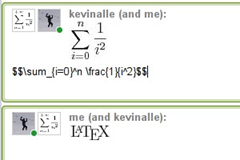The ages of productivity
September 11th, 2010 by jamesThe Undercover Economist, Tim Harford, has a good article in today’s Financial Times about the stages in life when different professions are most productive. For example, I did a quick Google/calculation: the average median age of a Nobel Prize winner in physics or chemistry is 55; in the literature and peace prizes, it’s 64. (Sorry, not going to do the full test for statistical difference today). This distinction makes some sense, as the great discoveries in the two scientific subjects are marked by innovation (something that may become replaced by habit with age) and excellence in literature and statesmanship benefits from vast amounts of experience.
But, in keeping with our recent discussions about reform in academia, perhaps the bigger question is whether or not we should be actively targeting funding to match these periods of productivity? A quote from the FT article:
Two of my favourite writers, Malcolm Gladwell and Jonah Lehrer, are worried about this – but from different perspectives. Gladwell, a Galenson fan, worries that our obsession with youthful genius will cause us to reject future late bloomers.
Lehrer has the opposite concern: that funding goes to scientists past their prime. He says the US’s National Institutes of Health (NIH) has been funding ever-older scientists. Thirty years ago, researchers in their early thirties used to receive 10 per cent of NIH grants; by 2006 the figure had fallen to 1 per cent.
From my experience in the UK, I think both groups have good, but different, funding opportunities. Established researchers are well-versed in applying for traditional call-based research grants, whereas young researchers are catered for by a number of fellowship schemes. I haven’t seen much evidence of disciplinary-based bias and to be honest, I think anti-discrimination laws would make it difficult to explicitly exclude a group of talented researchers just because they’ve reached an arbitrary age barrier. Think of Andrew Wiles, who found a proof of Fermat’s Last Theorem but just over the Fields Medal’s age limit of 40.
Ultimately the top performers in these disciplines are so unique that it doesn’t make sense to design generalized development or funding programmes for the rest of us. However we can at least take comfort that our best days may be ahead of us!


